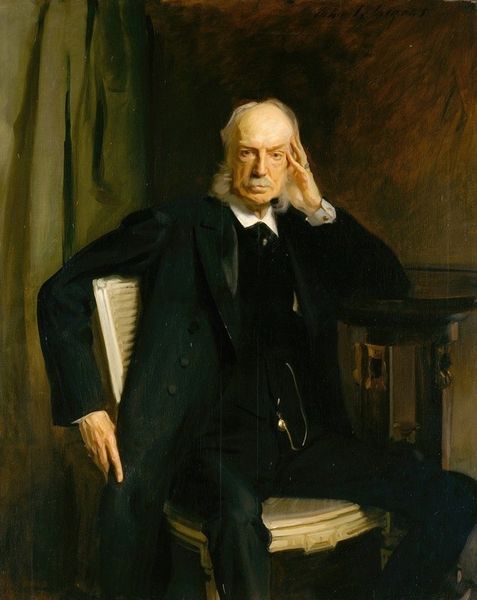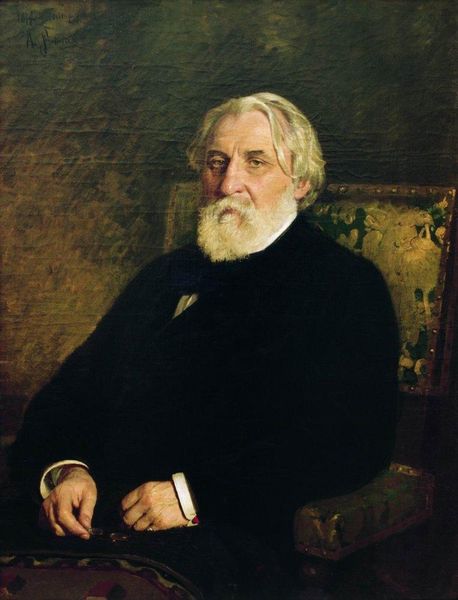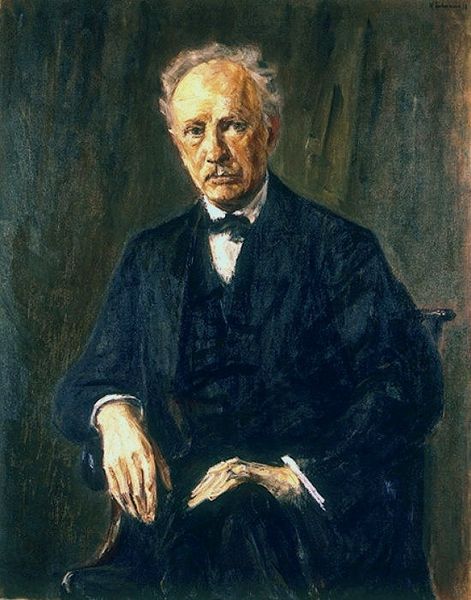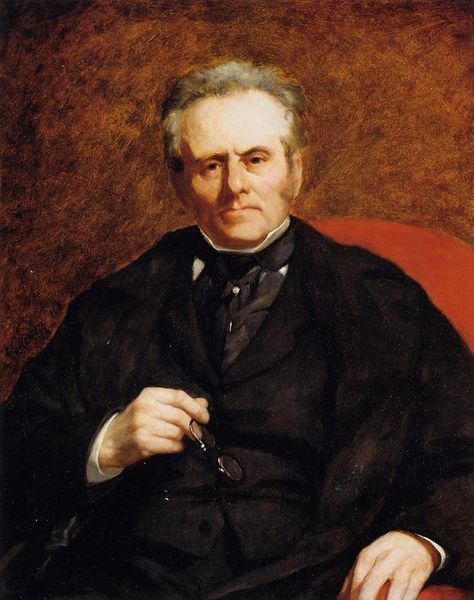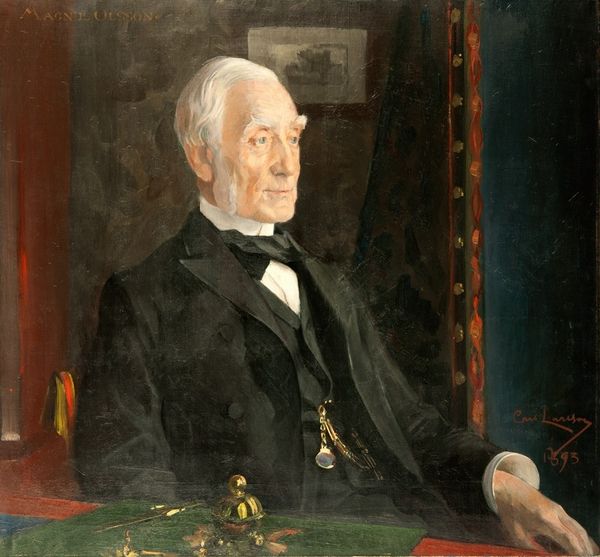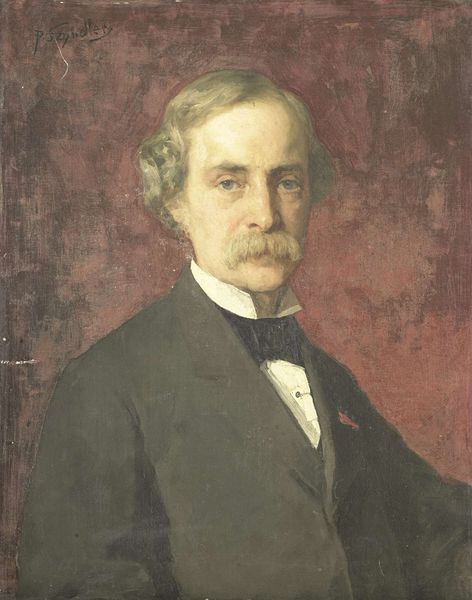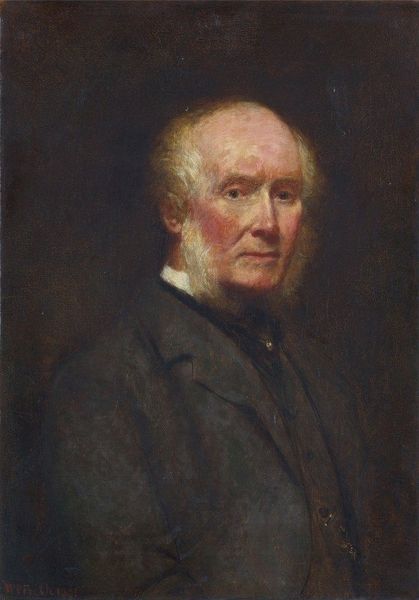
Dimensions: 95 x 69 cm
Copyright: Public domain
Editor: Here we have Vladimir Makovsky's "A Portrait of E. I. Makovsky," painted in 1880. It's oil on canvas, and resides in the Tretyakov Gallery. I find it a rather somber work. The palette seems muted, focused mainly on blacks and browns...What do you notice when you look at it? Curator: It's intriguing how the material reality of late 19th century Russia shapes this portrait. Consider the man's suit - the texture, the weight of the fabric – they speak to industrial production, to social class and the commodification of image. What labour went into its making, and how does that relate to Makovsky's societal position? Editor: I see what you mean. His suit isn't just clothing; it's a symbol of the industry that created it, and the wealth that allowed him to possess it. The cane too, then. Curator: Precisely. The cane represents not just support, but also status, accessible to only a segment of society. Note, also, the rather plain background: books almost hidden in shadows. I wonder what social conditions fostered this restrained setting? Or the artistic conventions surrounding portraiture itself and the artist's contribution. Editor: So, it’s not just about capturing a likeness, but about understanding the socio-economic systems that shaped the subject and the artist's world. It does make me wonder, about the hidden world of art production in this period... Curator: Absolutely. By examining the materials and the means of production, we start to peel back the layers of representation and uncover the complex relationship between art, labor, and society. This lens illuminates that. Editor: Thank you for showing me a way to delve a little deeper! I have much more to ponder. Curator: Indeed! Each portrait is much more than just image, once you look beyond face value.
Comments
No comments
Be the first to comment and join the conversation on the ultimate creative platform.




